Gatekeeper on the way of hot water: the function and operating principle of the elevator unit of the heating system
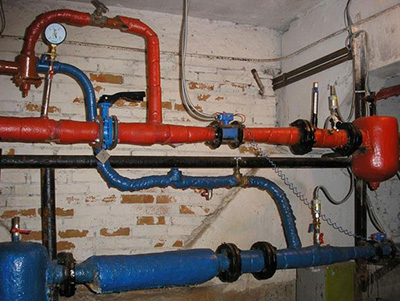
Let's first understand how central heating networks function. The source of thermal energy in the networks is boiler houses or thermal power plants, where the water is heated to the desired temperature.
After heating the coolant is transmitted to the consumer through pipes (then the same coolant returns back to the boiler room or thermal power plant through other pipes).
And here the difficulties begin. The fact is that boiler houses and thermal power plants provide heat carrier to large territories, but not all consumers are suitable for one or another heat carrier. For example, a boiler house can heat a certain territory in 130/70 mode (first number - this is the temperature in the supply line, second number - temperature in the return line), however, it is clear that 130 degrees - this is a high temperature for heating houses.
Therefore, in each house it will be necessary to install a special engineering system, which will cool the coolant to the required temperatureThe elevator unit performs the function of cooling the coolant.
Content
Central elevator unit with mixing chamber: what is it
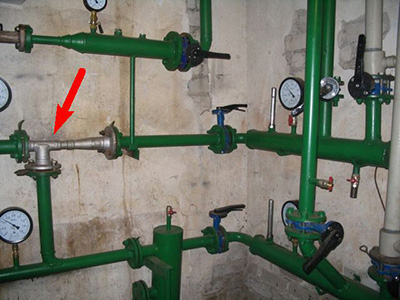
Elevator unit installed at the heat distribution point (in the case of multi-storey buildings, this point is located in the basement).
Externally, the device looks like a T-shaped iron pipe, which is equipped with three flanges. Additionally, it can be equipped with various heat and pressure sensors (the so-called "winding").
Inside, the elevator consists of a converging chamber to create a vacuum zone, a mixing chamber, a jumper chamber for supplying cold water, and a diffuser chamber. The unit is installed directly on the supply line, and the vertical jumper is attached to the return line.
The operating principle of the elevator unit is as follows:
- Superheated water from the heating main enters the inlet section of the elevator unit.
- The inlet compartment narrows at the end. Because of this, the flow velocity increases sharply. This leads to the creation of a vacuum zone in the center of the elevator.
- Because of this effect colder water from the return line begins to flow into the mixing chamber inside the elevator.
- Mixing of superheated and cold water occurs, which results in cooling the superheated water to the desired temperature.
- After that Water cooled to the required temperature passes through the diffuser chamber and enters the supply line.
- After passing through all the pipes the coolant returns through the heat supply main back to the boiler room or to the thermal power plant. The temperature of the coolant in such pipes is significantly lower than the temperature in the supply line. Therefore, this coolant can be used to cool the main coolant in the supply line.
Advantages and disadvantages of an elevator

The elevator unit of the heating system has both advantages and disadvantages. Let's start with advantages:
- Very simple design and high level of reliability.
- Low price.
- No special equipment is used for installation.
- Complete energy independence (does not require connection to the power grid).
- Saving coolant (using an elevator allows to reduce the consumption of the coolant by 20-30%).
However, elevator units also have flaws:
- To ensure tightness you will need accurately calculate the dimensions of the device and find the appropriate elevator.
- Must be pressure difference between the inlet and outlet lines, but the pressure drop should be no more than 2 Ba.
- Unable to control outlet water temperature (however, there are elevators that have an adjustment system).
Important! The elevator is very sensitive to contamination.
Device types
Depending on the ability to control the temperature of the water at the outlet, a distinction is made several types of devices.
Without outlet water temperature control mechanism
Such elevators allow reduce the temperature of overheated water by a fixed percentage, and there is no possibility of controlling the outlet temperature. Such elevators today are quite rare, since there are inexpensive devices with a control mechanism.
With mechanical control
Such units equipped with a thick cone-shaped needle, which is located in the superheated water supply chamber. This needle is connected to a special adjustment shaft, which allows you to change the location of the needle inside the chamber.
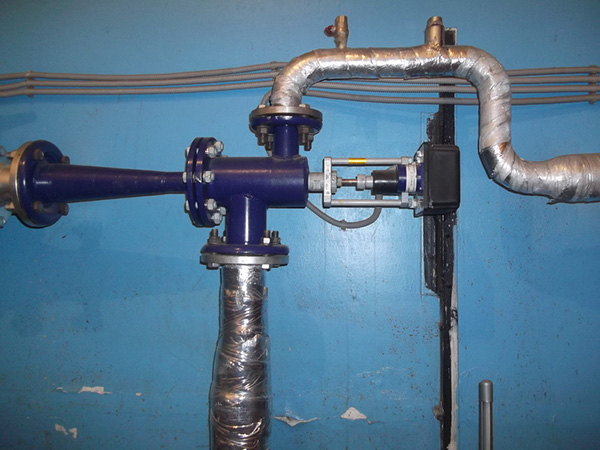
Photo 1. Elevator with mechanical control of the ratio between hot and cold water in the vacuum chamber.
When the shaft rotates, the needle moves in the nozzle area, which leads to to increase or decrease the gap between the superheated water chamber and the vacuum chamber. This controls the ratio between the superheated and cold water in the vacuum chamber, which allows the temperature of the mixture to be reduced or increased. A person must rotate the shaft to control the temperature.
With automatic heating system control unit
Such devices differ from the options with mechanical temperature control in that they additionally equipped with an electronic unit and a servo drive.
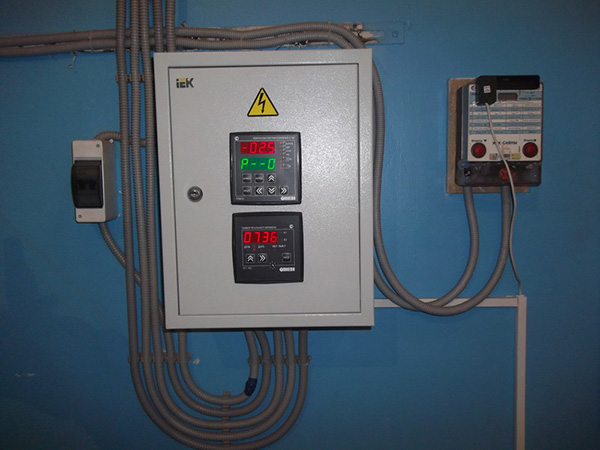
Photo 2. Timer with electronic control controller for central heating elevator. Automates water temperature control.
All readings from temperature sensors are received to the electronic water temperature control board; If necessary, the servo drive is started, which moves the needle, which leads to a change in the water temperature.
Important! The use of these devices allows for fully automated control of water temperature, and a person is only needed to set the system operating parameters.
Problems connecting to radiators
Any engineering device can start to malfunction. The main problems, which a person may encounter when connecting radiators and operating an elevator - this is a temperature discrepancy, incorrect water flow, noise, blockages, etc. Below we will consider these main faults in more detail.
Noise
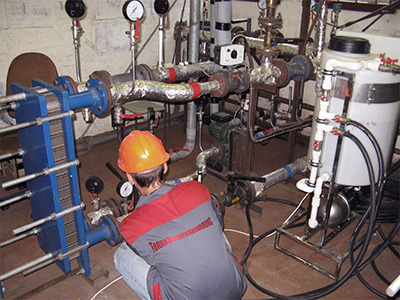
Normally, the elevator should operate quite quietly. The appearance of noise is usually caused by excess pressure level at the device inlet, cracking or corrosion of the nozzle, clogging of the elevator, misalignment of the nozzle, and so on.
There may be different methods for solving this problem:
- If the noise is caused by high inlet pressure, it is necessary to adjust the pressure in the section of the pipeline before the elevator (for example, by throttling).
- In case of clogging it is necessary disassemble and clean the device.
- If the noise is caused by corrosion or cracking of the nozzle, then it is necessary replace the nozzle or elevator entirely.
Temperature mismatch
It may also happen that you have made all the necessary calculations, bought an elevator, installed it, and then it turns out that The temperature does not match the calculations. What's the matter? This problem occurs most often due to problems with the nozzle or adjustment needle. The solution to the temperature discrepancy problem is to replace the nozzle or needle.
Attention! When buying, it is advisable to give preference to elevators with regulation. Even if it turns out that the real state of affairs does not correspond to the expected calculations, you can adjust the temperature and set the required outlet temperature empirically.
Incorrect water metering and consumption
Another problem that people often encounter when working with an elevator is incorrect water metering or consumption.

Most often this problem occurs due to cracking and corrosion of the nozzle, very serious blockage of the elevator, in which case noise also appears.
The pressure sensors at the inlet and outlet show difference of more than 2 Ba, as well as in the event of a malfunction of the pressure regulator in any section of the pipe.
This problem can be solved by repair or replacement of damaged parts and cleaning the clogged elevator.
Defective structural elements
The reasons for this may be different, but the main ones are a factory defect of the elevator or a malfunction of other elements of the heating network. The way to solve the problem in the first case is replacement of a faulty part or the entire device; the solution to the problem in the second case is to repair the damaged heating network element.
Blockages
Also very often incorrect operation of the elevator is observed in case of cloggingDebris may include particles of soil and sand, rust particles, pieces of gasket, etc.
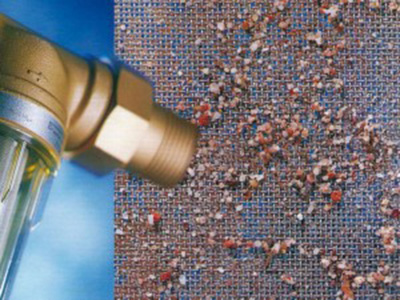
The thing is that all the debris can stick to the nozzle in the superheated water chamber.
In that case stuck debris will narrow the nozzle diameter, which over time will lead to a host of problems (pressure drops, incorrect water flow, noise, temperature discrepancies, and so on).
Clogging may occur due to insufficient tightness of the device, as well as due to corrosion of pipes, debris getting into the pipes, and so on.
The solution to the problem will be as follows:
- Cleaning the elevator.
- Installation of mud traps for collecting waste on water supply and return lines. In this case, the mud collectors must be located in front of the elevator.
- Regular implementation of preventive measures (don't forget to clean the mudguards too).
Useful video
The video explains the operating principle of the elevator heating unit.
Repair and troubleshooting
Elevator repair requires complete shutdown central heating mains.
Important! Repairs and elimination of comments are in progress in the summer before the start of the heating season.
It is also recommended to regularly conduct preventive inspection of the equipment to quickly identify emerging problems. Repair of equipment should be carried out by an experienced technician who will be able to determine the cause of the malfunction, disassemble the device, replace damaged parts, install a new elevator, and so on.







Comments